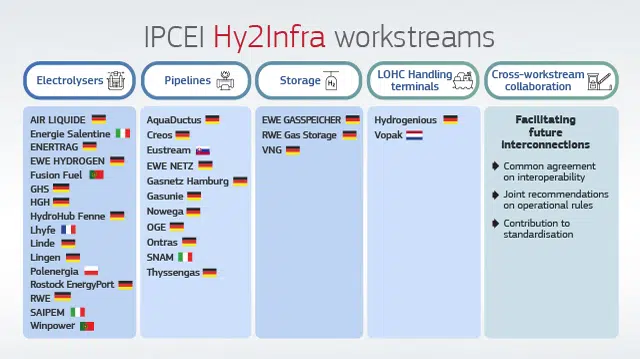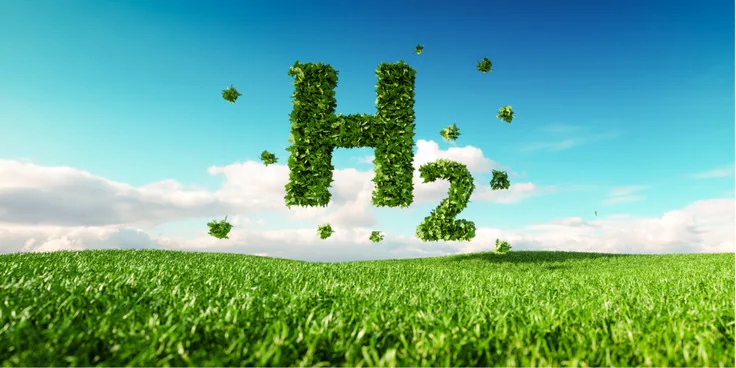Brussels – Seven EU countries will provide up to €6.9 billion to 32 companies—including five small and medium-sized enterprises-—to build the key infrastructure network for green hydrogen supply on the continent. In the Hy2Infra European Common Interest Project, there are also three Italian companies: Energie Salentine, Saipem, and Snam. The European Commission has approved today (Feb. 15), under EU state aid rules, the third major project called to reduce dependence on natural gas in favour of renewable hydrogen, following those launched in July 2022 (Hy2Tech) and September 2022 (Hy2Use). A project jointly prepared and notified by seven member states—France, Germany, Italy, the Netherlands, Poland, Portugal, and Slovakia. To be fair, driving the project will be the 23 participating German companies. Portugal has 2, the other countries one each.
The nearly €7 billion in public funding authorized by Brussels is expected to unlock an additional €5.4 billion of private investment in the 33 winning projects. With Hy2Infra, the EU wants to cover a large part of the hydrogen value chain, supporting the deployment of large-scale electrolysers for the production of 3.2 GW of renewable hydrogen, the construction of new or converted hydrogen transmission and distribution pipelines of about 2.700 km, the development of large-scale hydrogen storage facilities with a capacity of at least 370 GWh, and the construction of handling terminals and related port infrastructure for liquid organic hydrogen carriers (LOHC) to handle 6,000 tons of hydrogen per year.

According to the European Commission, the 33 projects are “very ambitious,” aiming to “develop infrastructure beyond what the market currently offers.” As emphasized by the European Commission’s Executive Vice President in charge of competition policy, Margrethe Vestager, these initiatives will create “the first regional infrastructure clusters in several member states and prepare the ground for future interconnections across Europe.”
They will, in short, form the foundations of an “integrated and open” hydrogen network, accessible on non-discriminatory terms, and enable the increase of the market for renewable hydrogen supplies in Europe. In derogating from European state aid rules, the commission explained that the project “also involves significant financial risks” and that “therefore, public support is needed to incentivize companies’ investments.”
The commission also verified that the planned aid ceilings align with the projects’ eligible costs and their financing gaps. In addition, if the covered projects succeed in generating net additional revenue, the clawback mechanism will be activated, whereby enterprises will return part of the public funding received.
English version by the Translation Service of Withub






